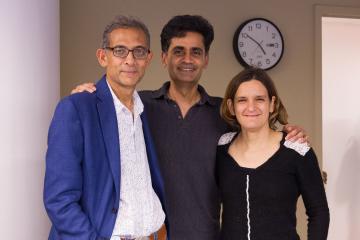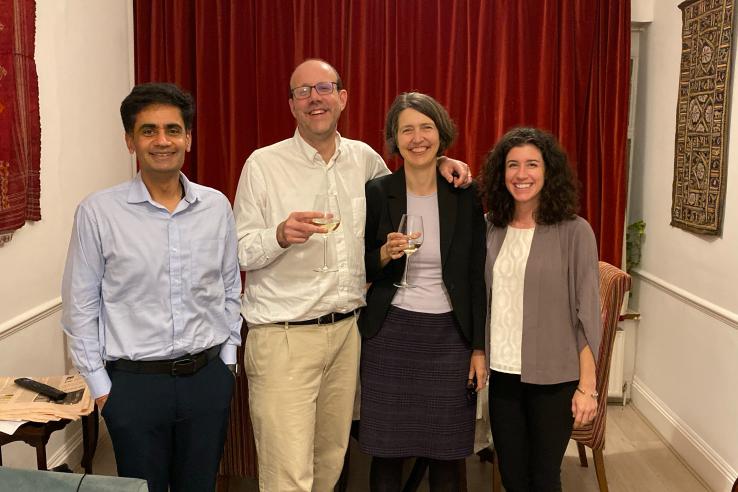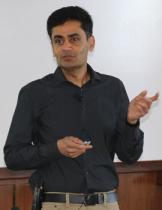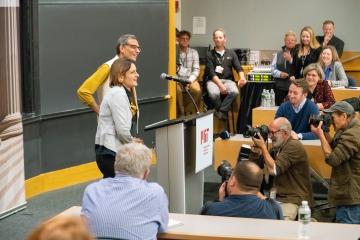
From deworming to DIV: Michael Kremer’s extraordinary success

I first met Michael Kremer in 2009 when I had just joined J-PAL and started work on creating some of our first cost-effectiveness analysis. It was a daunting task because academic papers that so rigorously measured impacts, rarely if ever reported program costs. After a few weeks of cold calls to researchers and implementers that did not get me far, Rachel Glennerster put me in touch with Michael.
Despite being such a senior professor and star of the field, he was incredibly generous with his time and we had many calls in which we discussed methodology and specific cases. He even reviewed some of my models and gave so many great suggestions. He put me in touch with many of his colleagues, former students and implementation partners, who clearly loved and respected Michael and opened up their resources and cost data to me. This was invaluable in helping us understand better the scale-up puzzle that J-PAL was just beginning to take on systematically, and build credibility for our newly launched policy group in those early days with our funding and implementation partners for whom naturally costs were as important as impacts.
My first experience of Michael’s incredible intellect, humility, generosity and helpfulness would repeat itself many times over the next decade. But two more examples stand out for me—Deworming and DIV.
It was 2010 and J-PAL was actively trying to encourage governments to consider deworming where appropriate, as an effective health and education intervention, based on Michael’s work in Kenya. I planned a trip at very short notice to leverage a policy window to pitch the idea of a conference to the state government of Bihar in India. At even shorter notice, Michael got on a call with me, explaining all the nuances of his research, and working with his colleagues at the London School of Tropical Medicine to get me worm maps for the state.
As luck would have it, a few days later I was able to meet with senior health department officials in the state and pull out those exact maps on my laptop, which triggered their interest in adding a session on deworming at our joint conference with the government. The conference a few weeks later went really well and at the end of it the Chief Secretary of the state walked up to Esther Duflo and me and said “I want to explore deworming in Bihar!”
I invited our brilliant partners at Deworm the World (DtW), an organization Michael co-founded, to join us in meeting with the government to work on next steps. Thanks to their effort, the rest is history—tens of millions of children in the state were dewormed in the next few years. This success in Bihar and other states was a key reason behind the nation-wide scale up of deworming announced in 2014.
From the original deworming project in Kenya, to explaining the details of the research and the worm maps to me in Cambridge, to the incredible work of DtW in states like Bihar, and its successor Evidence Action’s (EA) support for the nation wide scale up that has reached hundreds of millions of children in India alone—Michael's invisible hand was behind a lot of the good that happened. But in true Michael style, he stayed behind the scenes, enabling others to succeed.
That behind the scenes facilitation to achieve incredible impact is at the heart of what Michael has also realized at USAID’s Development Innovations Venture (DIV). In a rare departure for academics at the peak of their careers, Michael diverted immense amounts of his time and energy from his own research agenda to instead fly in and out of Washington DC every week for the last many years to help set the vision, structure and operations of DIV. He dived in to understand and navigate arcane funding mechanisms, the intricacies of bureaucracy, and the formality of hierarchy; and invested in the power of networking. All so that more policy relevant research could be seeded, and innovative, impactful programs could be scaled up and help reduce poverty and improve lives around the world.
Whenever Michael has called me to discuss new ideas, I have been so impressed at how closely involved he is in every aspect of DIV from raising resources, to hiring staff, to writing reports. Like with DtW and EA before, he has again been a critical part of the success of DIV. I again saw from close his innovation and convening of multiple stakeholders as he laid out the vision for and then helped launch and guide another organization dedicated to evidence-based scale ups—the Global Innovation Fund.
If that was not enough, he is now working actively through another organization he co-created—Precision Agriculture for Development—to harnesses innovations in technology and research to improve the lives of smallholder farmers. All these organizations are working so hard and so well to make sure that effective anti-poverty programs are scaled up properly.
In awarding the 2019 Nobel Memorial Prize in Economics to Michael, along with Abhijit Banerjee and Esther Duflo, the selection committee could not have gotten it more right. While their citation celebrates Michael’s intellect and research, I want to raise a toast to Michael’s invisible hand in the scale up efforts of so many organizations that he is associated with. But even more, a toast to his humility, sacrifice, generosity and mentorship. Thanks Michael and Rachel for being such inspirations for everyone in the field, cheers to you!


